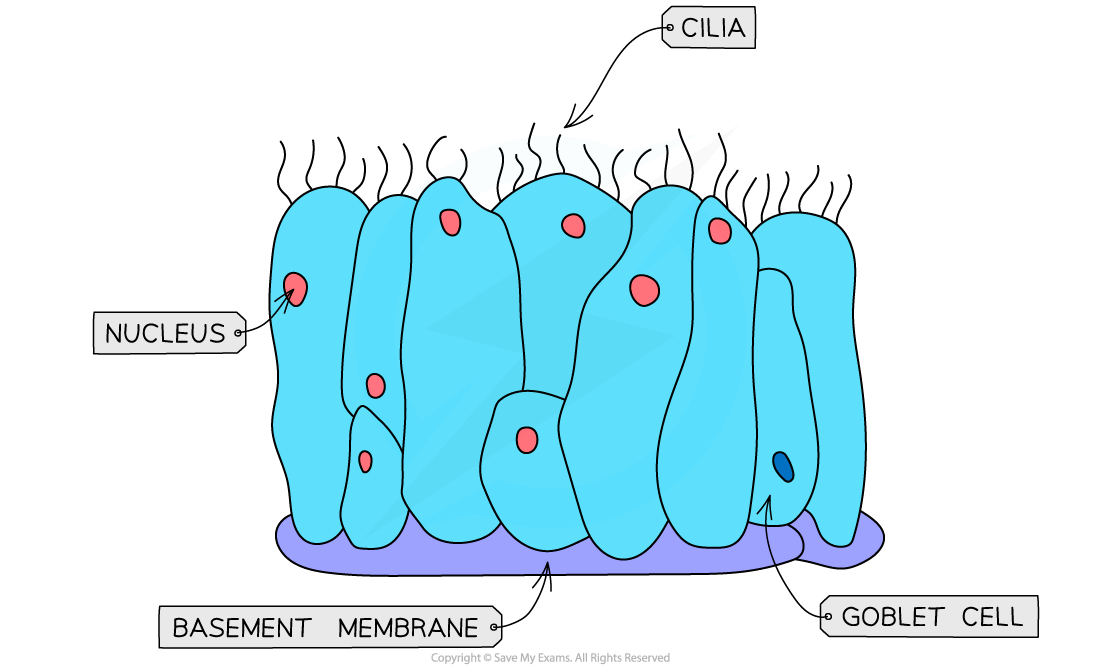Distribution of Tissues (Cambridge (CIE) AS Biology): Revision Note
Exam code: 9700
Distribution of tissues in the gas exchange system
Cartilage
Cartilage is a strong and flexible tissue found in various places around the body
Cartilage forms 'c' shaped rings that are arranged along the trachea, called tracheal rings
These rings help to support the trachea and ensure it stays open, while allowing it to move and flex while we breathe
Cartilage also supports the bronchi, though it does not form c-shaped rings here
Cartilage is not found in the bronchioles
Ciliated epithelium
Ciliated epithelium is a specialised tissue which lines all of the tubes of the airways
Each cell has small projections of cilia
The cilia sweep mucus, dust and bacteria upwards and away from the lungs and the epithelium itself

Goblet cells
Goblet cells can be found scattered throughout the ciliated epithelium in the trachea, and also in the bronchi, though usually not in the bronchioles
They are mucus-producing cells that secrete viscous mucus
This mucus traps dust, bacteria and other microorganisms and prevents them from reaching the lungs
The mucus is then swept along by the cilia of the ciliated epithelium upwards and is swallowed
The mucus and any microorganisms will then be destroyed by the acid in the stomach
Squamous epithelium of alveoli
The alveoli have a lining of thin squamous epithelium, that allows for gas exchange
The squamous epithelium forms the structure of the alveolar wall and is very thin and permeable for the easy diffusion of gases
Smooth muscle
Smooth muscle can be found in the walls of the trachea, bronchi and bronchioles
It helps to regulate the flow of air into the lungs by relaxing when more air is needed and constricting when less air is needed
Capillaries
Each alveolus is surrounded by an extensive network of capillaries
Carbon dioxide diffuses out of the capillaries and into the alveoli to be exhaled, while oxygen diffuses the other way from alveoli and into the capillaries to be carried around the body
These capillaries have a diameter of around 3-4 µm, which is only wide enough for one red blood cell to travel through at any one time
This ensures that there is sufficient time and opportunity for gas exchange to occur
Worked Example
Explain how the lining of the trachea, bronchus and bronchioles provide protection against pathogens
Cilia beat to move mucus away from the lungs and up towards the mouth
Mucus is produced by goblet cells and acts as a barrier to pathogens from entering the ciliated epithelium
The mucus also traps bacteria and microorganisms, while blood vessels bring macrophages to engulf any pathogens in phagocytosis

Unlock more, it's free!
Did this page help you?